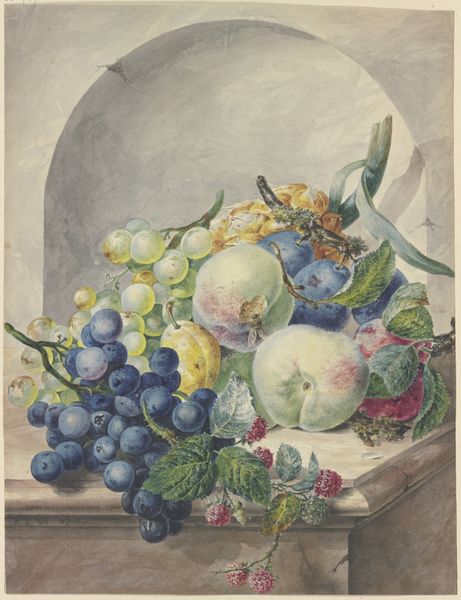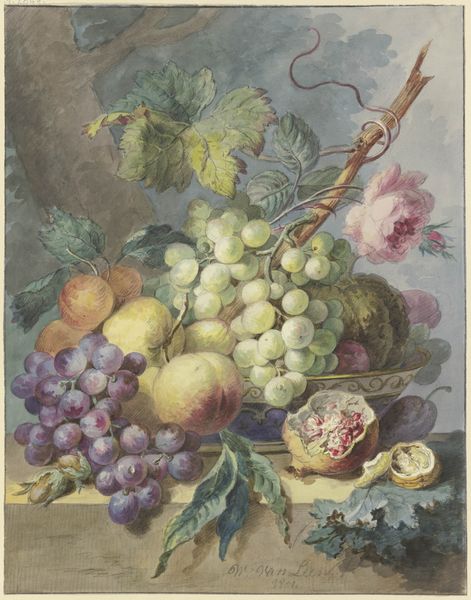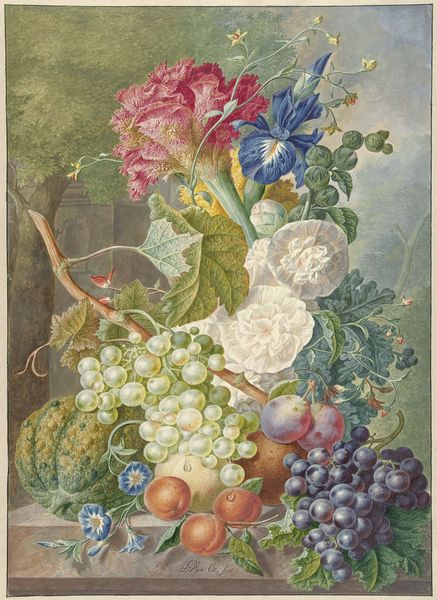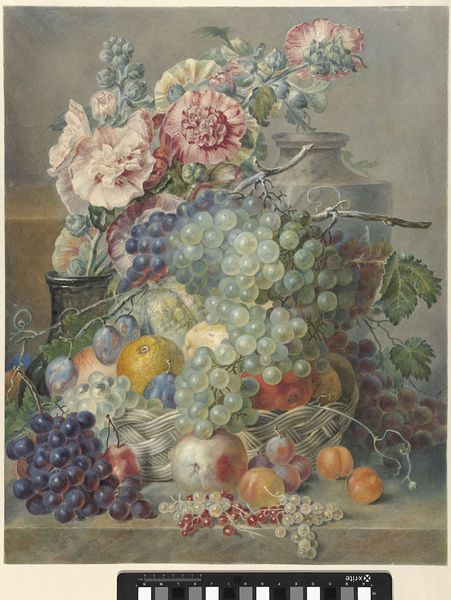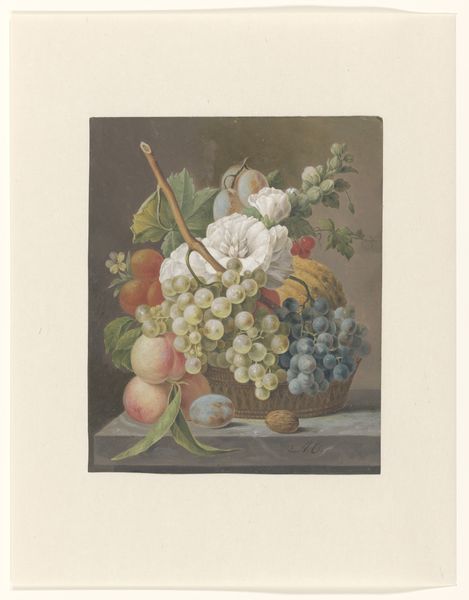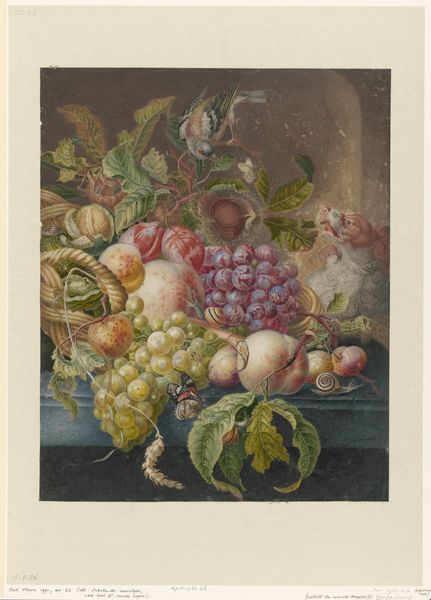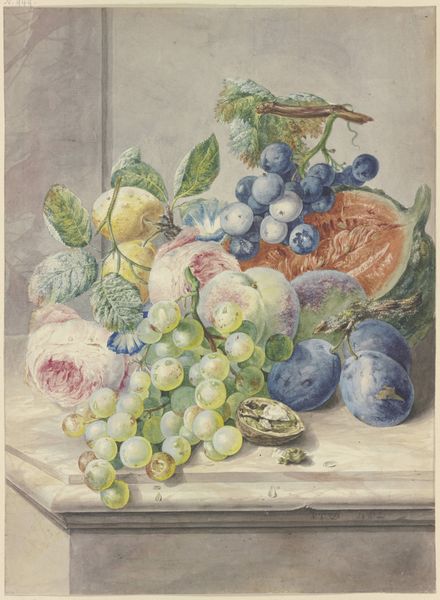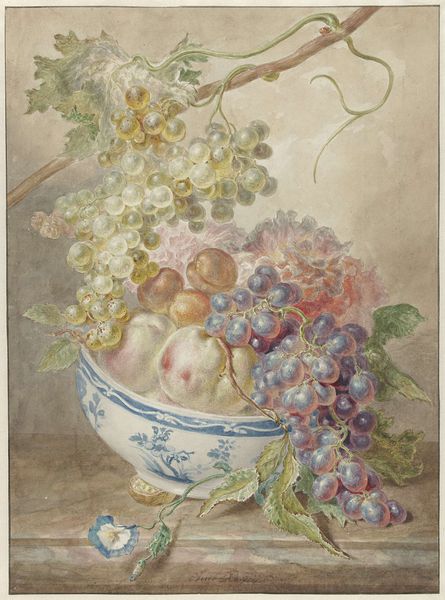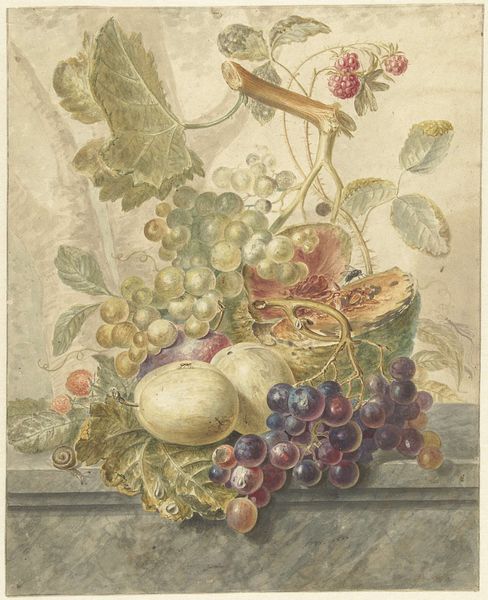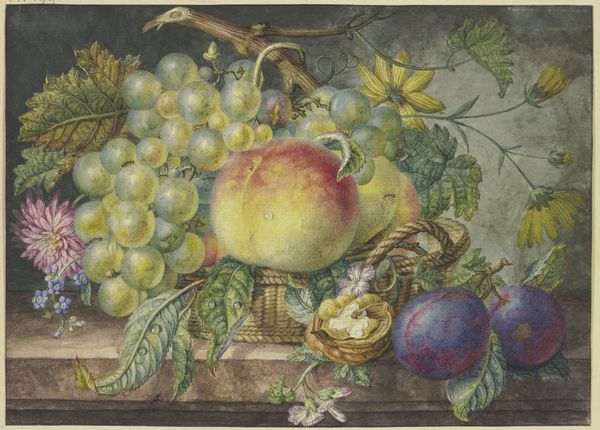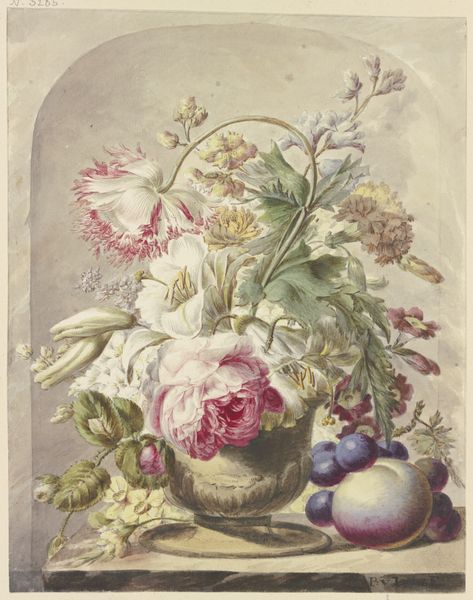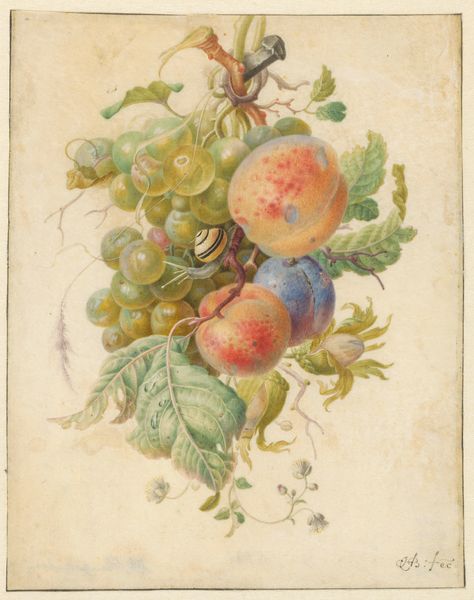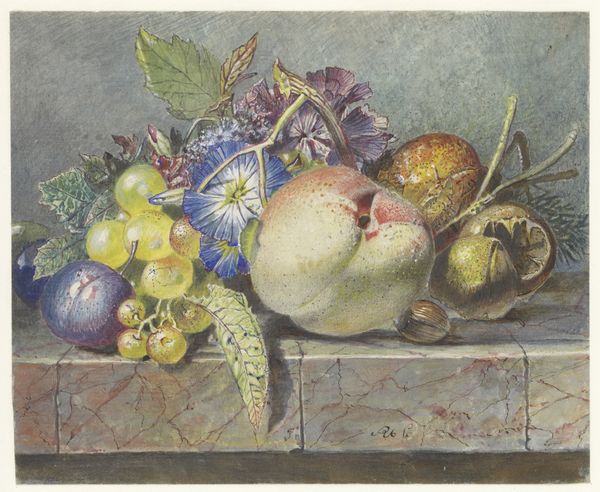
painting, plein-air, watercolor
#
painting
#
plein-air
#
landscape
#
watercolor
#
fruit
#
romanticism
#
botanical art
#
watercolor
Dimensions: height 253 mm, width 210 mm
Copyright: Rijks Museum: Open Domain
Editor: Here we have Jean Bernard's "Still Life of Flowers and Fruit," likely painted between 1775 and 1833. The use of watercolor gives it such a delicate, almost ephemeral quality. How do you interpret the context of a piece like this? Curator: For me, this watercolor resonates with the 18th-century obsession with natural science and classification. It also suggests interesting ideas about consumption and trade in the period. Still lifes are never just about aesthetics. We have to ask: who had access to these fruits and flowers? Editor: That’s a great point. I hadn't considered the economic aspect. It seems removed from those concerns on the surface. Curator: Precisely! The Dutch Golden Age had a powerful influence, but in the late 18th and early 19th centuries, this style became associated with bourgeoisie aspirations and ideas about home and women's position. How does seeing that power dynamic impact your interpretation? Editor: It casts the painting in a different light, I think. The domestic sphere takes on new dimensions, doesn’t it? I assumed it was only a "beautiful" object, when it is tied to historical forces. Curator: Absolutely. Think about gender roles at the time; flower painting was deemed an appropriate artistic pursuit for women, often limiting their recognition within broader artistic movements. Do you find something subversive, or perhaps conservative, in the fact that a man created this intimate scene? Editor: Now, that's really fascinating. It prompts me to reflect on how male artists participated in a genre coded as feminine. The idea of subversion and conformity coexisting is certainly something to consider here. Curator: Yes! The interplay of romanticism and naturalism speaks to deeper cultural shifts, perhaps critiquing excess even while displaying its bounty. A constant pull and push. Editor: Thanks, I will never look at a still life the same way again. Curator: Nor will I, hopefully. That is the point of our intersectional method!
Comments
No comments
Be the first to comment and join the conversation on the ultimate creative platform.
